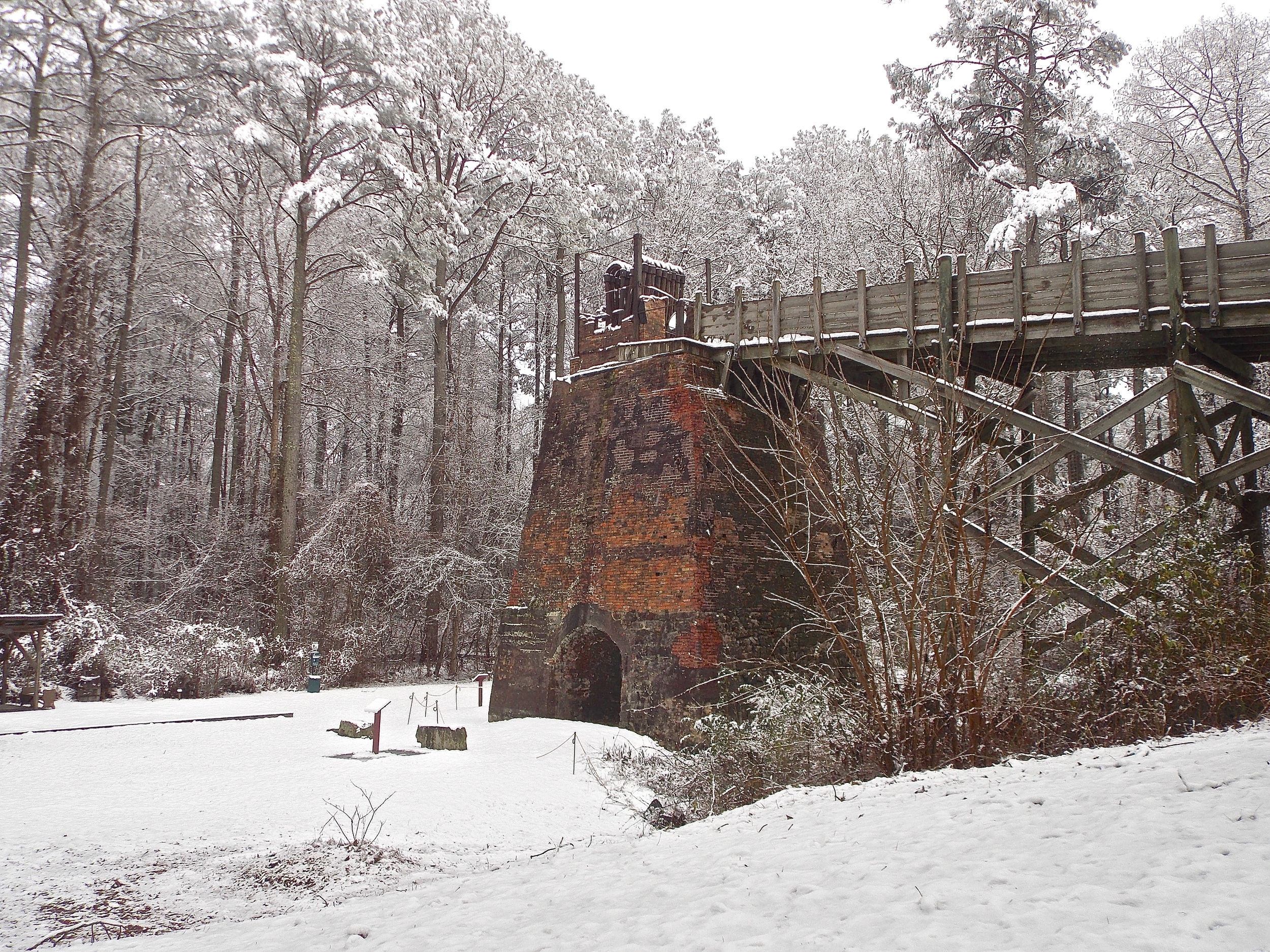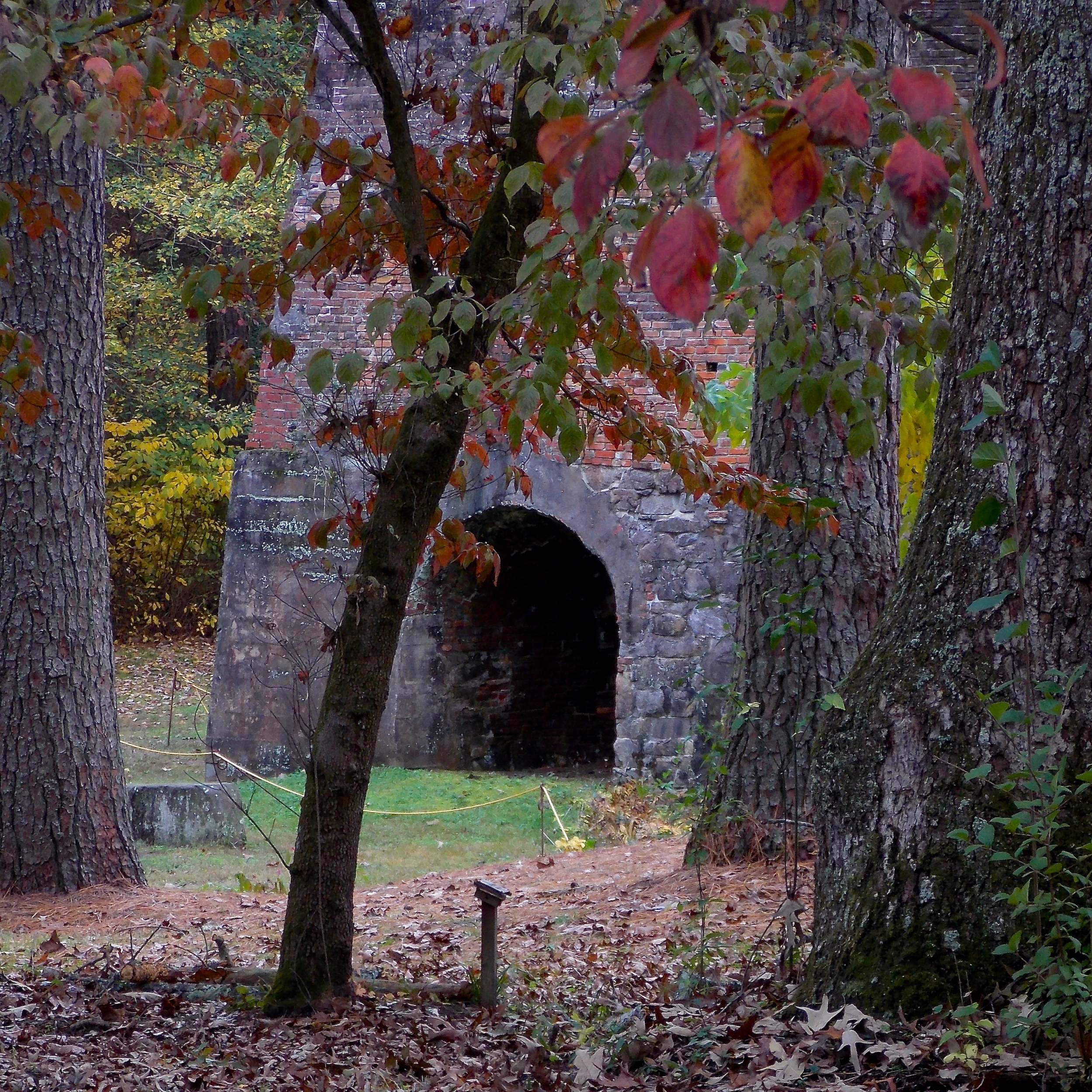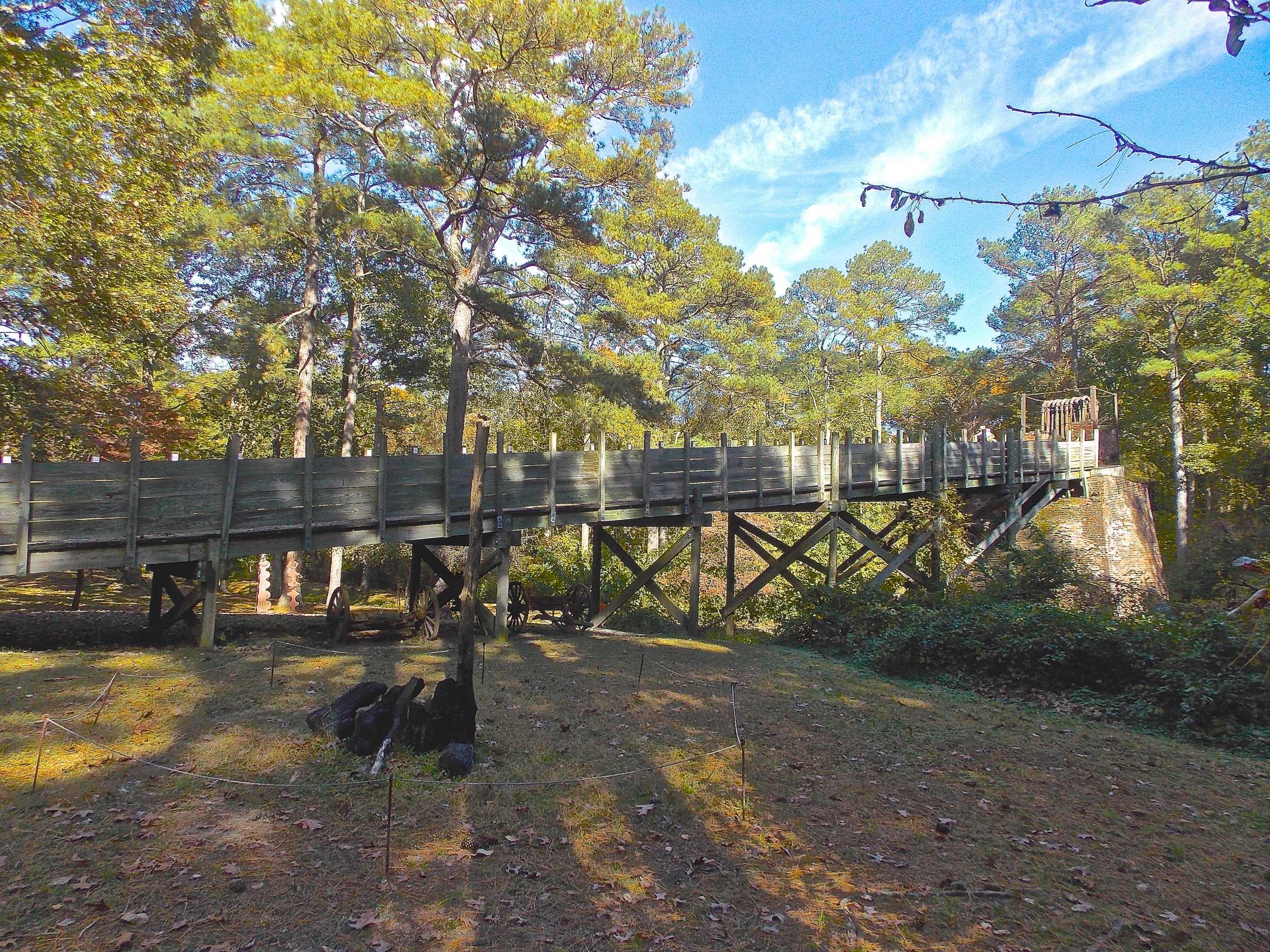Nassawango Iron Furnace
National Historic Landmark
As you walk up the ramp to the top of the furnace, look at the carts near the ramp base. Imagine them filled with charcoal, bog iron ore and shells, and then pulled up to the top of the ramp. Look in the mirror at the top of the furnace and imagine interior temperatures of 3000 degrees Fahrenheit.
The Nassawango Iron Furnace was erected in 1830 by the Maryland Iron Company to smelt iron from the bog ore formations in the immediate vicinity. It is the only furnace in Maryland ever to make extensive use of bog ore. It operated only until 1849, and was reported to be in dilapidated condition by 1859.
The furnace produced about 700 tons of iron per year, but the quality and distribution of the bog ore may have caused the several financial failures that the ironworks underwent.
The most significant fact about the furnace is that it made use of hot blast techniques only a few years after the idea was developed in England in 1828-1830. If the Nassawango Furnace was built with the hot blast gear installed from the beginning, and not later converted, it would have to be one of the first hot blast furnaces in America. Even if the equipment were added late in the life of the furnace, it would still qualify as a very early example of the hot blast technology. But further research indicates that the blast apparatus was likely added to the existing stack during a time of ownership change, either in 1837 or 1840.
The Nassawango Iron Furnace Archaeological Site is registered with the National Register of Historic Places, and recognized by the American Society of Mechanical Engineers as a National Historic Mechanical Engineering Landmark.









